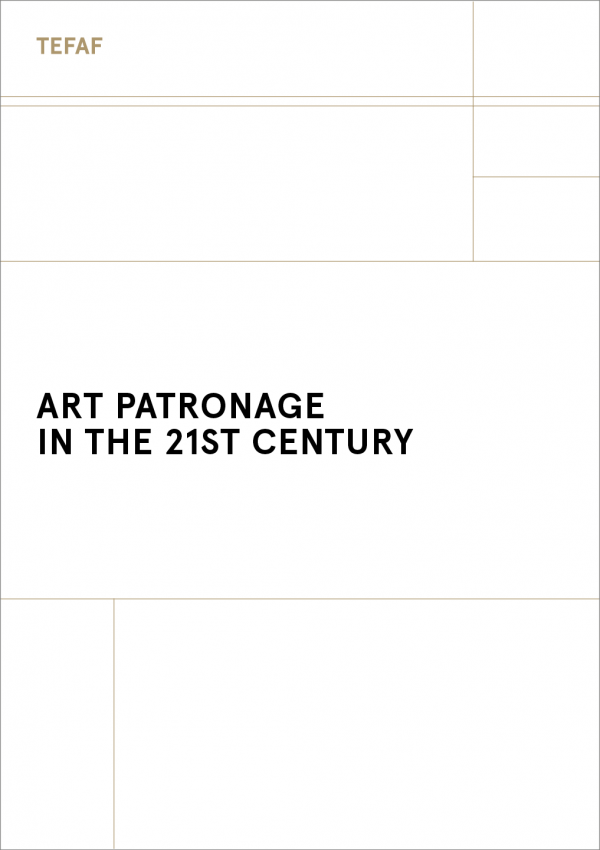TEFAF Art Market Report 2020 – Art Patronage in the 21st Century
- Analyst: Anders Petterson
- Pages:
TEFAF presents the TEFAF Art Market Report 2020 – Art Patronage in the 21st Century written by Anders Petterson of ArtTactic. The report is a forward-looking report on philanthropic giving to the visual arts, focusing on recent innovations and trends in art patronage, with a particular focus on next generational issues.
Private philanthropy constitutes an increasingly important part of the charitable funding landscape. In 2018, philanthropic giving in the U.S., amounted to an annual $428 billion1. An estimated $292 billion, was donated by individuals, up 21% from 2008. One of the sectors that have benefitted from the increase in private support has been arts and culture, which received an estimated $19.5 billion in 2018. The Arts Council in the UK, recently published a report, which found that 91% of arts and culture organisations receive some form of private investment in the 2017/18 financial year, with individual giving accounting for 43% of private investment in arts and culture.
The increase in private support for the arts, comes on the back of an increasingly challenging funding situation for the arts and cultural sector. Large and small arts organizations in Europe and the U.S. have been and are continuing to face cuts in public funding. In other regional art markets around the world, the absence of public funding, make these art and cultural eco-systems almost entirely dependent on private philanthropy, either through corporate or private giving and support.
NextGen behaviour and motivations play an important role in this research. We are standing at a tipping point between art patronage as practiced by the older generation (baby boomers) and new models put forward by the next generation (millennials and GenZ). Art philanthropy has long been the domain of the wealthy baby boomer generation, but the profile of today’s philanthropists is changing. Increasingly, Millennials (and Gen Z’ers) who are reinventing what it means to be an art patron. While many in their parents’ generation were about the ‘feel good’ factor of giving, as well as social status and access to the right social circles, there are signs that the new generation of philanthropists are looking for a deeper sense of ‘purpose’, and are more concerned about the social impact of their philanthropic activities. Simply, they want more than just their name on the museum wall; they want to see real impact and measurable results and they want to be more pro-active and involved with their donations.
Click ‘Download’ to access the full report.

